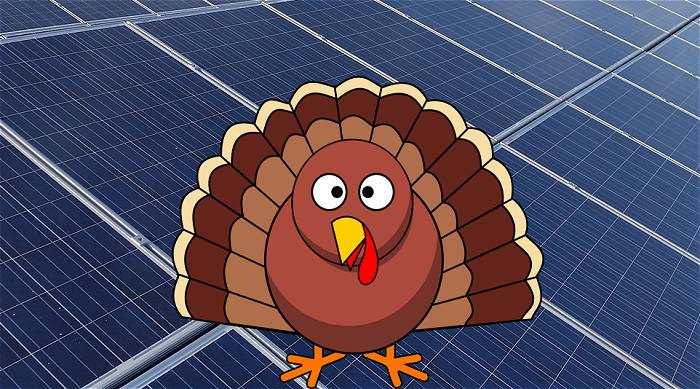
Image – foreground – OpenClipart-Vectors | background: eliseocabrera
Leadoux Turkeys in Bairnsdale is relocating and expanding its free-range production and processing venture, part of which will include installing a solar power system.
Leadoux Turkeys had its start back in 1982, originally as a hobby for John Leadoux who began with 100 birds. It remains a family-run business today and supplies dozens of butchers in Victoria and New South Wales with free-range turkeys and turkey products.
The poultry business has grown to a point that it’s time for not just expansion, but also relocation. It won’t be moving far – the Victorian Government says it has helped secure the company’s future in Bairnsdale. The new location will be larger plot of land where the company will be able to boost production from 8,000 turkeys per annum currently to 20,000 birds by 2019; with view to its products reaching more Australian markets and potentially overseas.
The relocation will also result in more jobs – from six full time positions now to 23 within two years.
The new development will have some green aspects; including grey water recycling and a composting system that will result in zero waste from bird processing operations. The Victorian Government says the new facility will have a special focus on animal welfare, providing advanced climate control systems, regulated water systems and improved ventilation flows.
Another feature of the new facility is a solar power system, the size of which hasn’t been specified as yet.
Solar Power And Poultry
Poultry farming is a very energy intensive business; with heating, ventilation, air conditioning, lighting and processing gobbling1 up electricity. With power prices increasing significantly in recent years, reining in energy costs has become a more pressing issue for farmers.
When Ingham’s was listed on the Australian Stock Exchange back in 2016, some poultry farmers could see the writing on the wall regarding solar for an added reason – production costs would have to be cut in order to remain viable in a more competitive environment.
An asset that all poultry farms have are sheds; often huge structures with plenty of rooftop space – perfect for solar panels.
An Australian Government issued guide targeted towards meat chicken farmers published in 2014 states:
“The electricity load profile for chicken meat chicken farms appears to correlate well with electricity generation from solar photovoltaic (PV) systems.”
Given the increase in energy costs and plummeting price of PV since that time, the case for commercial solar power is even stronger now.
A combination of solar power and battery storage can also be viable in some situations.
An example of a poultry farm that is using solar + storage is Craig Henderson’s free-range broiler chicken farm outside Warracknabeal in Victoria. Mr. Henderson had a very compelling reason to install batteries – being 15 kilometres away from the nearest mains supply, it was going to cost him more than $1 million just to connect to the grid.
Footnotes
- I tried not to do it, but couldn’t resist at least one poultry pun. I apologise. ↩

 RSS - Posts
RSS - Posts



Speak Your Mind